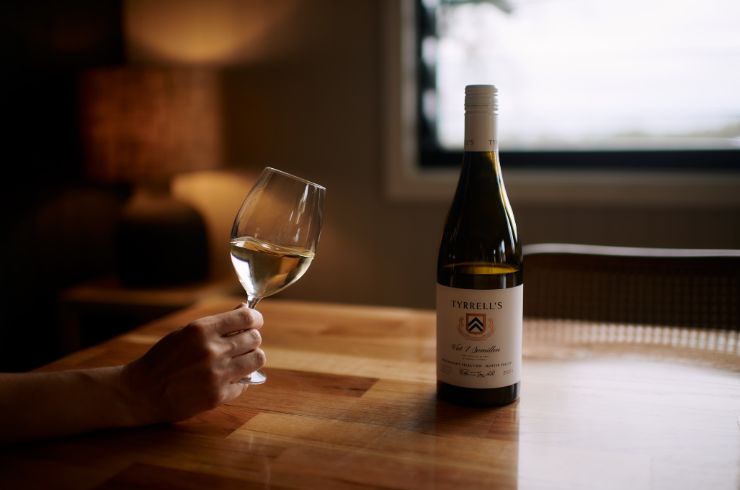What is decanting?
To decant simply means to pour from one vessel to another. Since the 17th century, decanting wine prior to service has been customary – initially for the practical purpose of transferring wine from large amphorae to smaller, more easily handled vessels.
While still used for their aesthetic impact today, decanters are most commonly used as a tool to ensure a wine is served at its best.
What does a decanter do?
Decanters are a great way to turn a bottle of wine into a statement table centrepiece – but they’re more than just decorative. Typically, decanting a wine will serve one of two purposes: to aerate the wine or to separate it from idle sediment that accumulates with age.
The shape and size of a vessel will generally indicate which purpose it is intended for. Decanters with a large base increase the surface area of the liquid, allowing it to come into contact with more oxygen and aerate the wine. Decanters with fine, narrow necks are designed to trap and remove sediment while pouring.

Using a decanter to aerate your wine prior to serving can help to soften the sharp tannins present in young, medium-to-full bodied wines. It can also ‘open up’ the wine, amplifying subtle flavours and aromas. Tannins and acid naturally soften with bottle age, so wines that have been in the cellar for a while will typically require less decanting time prior to serving.
For wines under 10 years of age, aim for between 1-4 hours decanting time. For anything over 10, decant for an hour maximum – for wines aged 20 years and over its best to decant briefly or not at all.
When should you use a decanter?
Almost all red wine varieties will improve with decanting, but more fragrant and delicate wines like pinot noir are often best poured straight from the bottle. Leaving it out of the decanter helps preserve its fragrant and elegant nature.
Alternatively, structured varieties like nebbiolo and cabernet sauvignon respond really well to decanting ahead of time, opening up and changing with exposure to oxygen. Fuller-bodied white wines will also benefit from aeration prior to serving – think drops like Côte de Beaune Premier Cru and above, benchmark Australian chardonnay and riesling Grosses Gewächs.
Many experts also recommend the method of double-decanting, which involves pouring the wine into a vessel and then refilling the original bottle once it has been rinsed with filtered water. This makes it possible to decant multiple styles or vintages at once without confusion.

Top tips for decanting wine
Pick your vessel: opt for a finer-necked decanter for aged styles or a large-based one for younger, more tannic wines.
Watch the clock: young, full-bodied reds and whites can be decanted for a while without damaging subtle flavours and aromas. For more fragile, older wines ensure you decant for no more than an hour.
Double up: double-decanting is a great way to aerate a few wines at once without confusing them – and without the need for multiple vessels. Just ensure you rinse out older bottles before you re-fill them to remove any stray sediment.
Next steps on your wine journey
If after reading this, you’re wanting more wine knowledge, you can always take one of our online or in-person Halliday Wine Academy courses.
Halliday Wine Academy: Fundamentals of Wine in-person education courseJoin Jane Faulkner in Melbourne this May 2025 for our Fundamentals of Wine in-person course. Across one two-hour session each week for four weeks, Jane will guide you through course materials and a selection of highly rated wines. Find out more.
Halliday Wine Academy: Introduction to Wine online education course
Across eight modules, Halliday Wine Academy's Introduction to Wine course offers a detailed look at the Australian wine landscape. Learn about wine varietals, Australian wine regions, how wine is made, how to taste and describe wine, how to approach food and wine matches, along with handy tips that address common wine questions. Find out more.
Once you've mastered the basics, enrol in Halliday Wine Academy's Wines of the World. Europe will guide you through the key regions, wine styles and grape varieties, labelling laws and appellations, and more, of France, Spain, Portugal, Hungary, Austria and Germany. Europe and Beyond will cover Italy, Greece, the Americas, South Africa and New Zealand. Purchase both courses as a bundle and save. Find out more.



